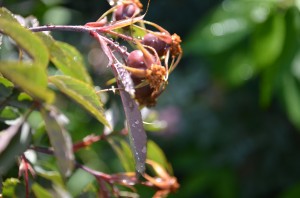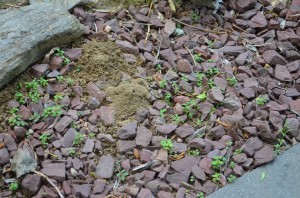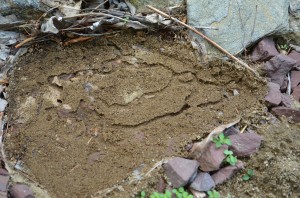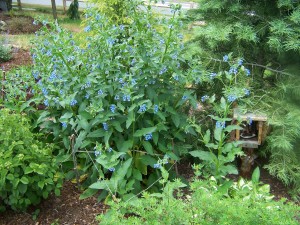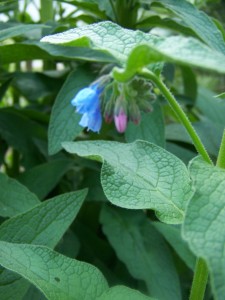Tonight I am giving a lecture on “Easy Care Roses” at the Blackstone Public Library, so while I was out cutting some roses to bring along, I took the camera out and snapped some photos.
June is when the roses come in to their own and start what for many will be 5 months of bloom. That is a lot for one flower to give.The secret to a long bloom time, not having to spray for foliar diseases, and NO DEADHEADING (my least favorite chore in the hot summer garden months) is the selction of the right cultivar, and that is what I will be speaking about.
I cheat a little here and grow a few roses I would describe as anything but easy care, but I am weak sometimes, and their beauty and fragrance drew me in, and now I am a slave to their whims . But most I grow are super easy and put on a spectacular show all summer.
This is an unknown red climber given to me by my mother. It looks lonely today because it’s companion plant , a Betty Corning clematis, was looking very funky lately and got sent off to UNH Plant Diagnostics Lab yesterday.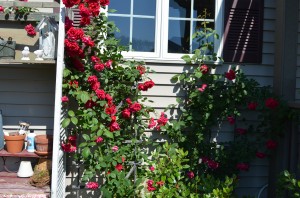
This next one is a rose I can no longer find in cultivation from a series named after National parks and landmarks, it is called the Canyon Rose and is a large shrub, or as grown here, a short climber.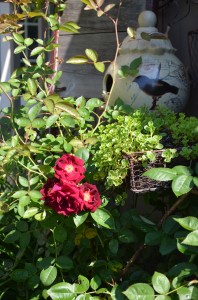
Not yet blooming, but loaded with buds (in this photo) is the rose we call Grammy’s Rose. It was grown from a cutting taken in my grandmother’s garden from a old fashioned rambler that was a gift from her mother in the 1930’s. It gets black spot like nobody’s business, and often powdery mildew too. It is thorny as all get out and blooms only once a year for five minutes (well really about 3 weeks. )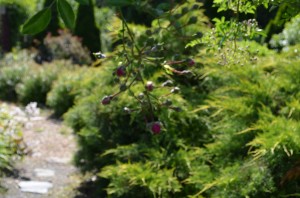 Here it is in bloom so you can see why , besides sentimental reasons, I keep it around.
Here it is in bloom so you can see why , besides sentimental reasons, I keep it around.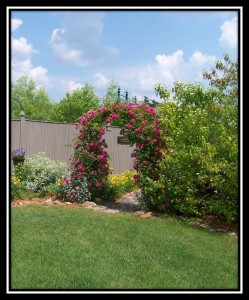
This pretty pink is Capt. Samuel Holland, one of the Canadian Exporer Series, I grow it as a standard…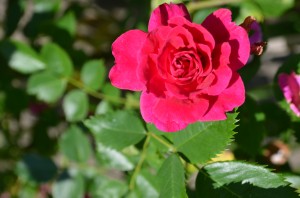
and this is another climbing red(name unknown) growing on the arbor leading to the newest gardens.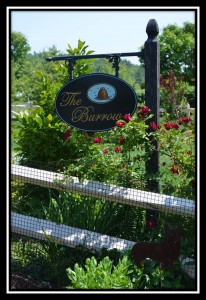
The knockouts, pink here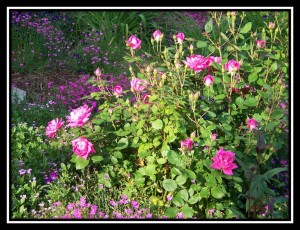 and red
and red 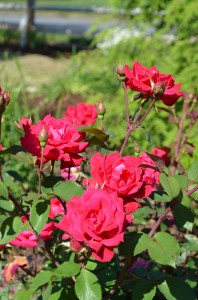 are two of my favorite shrubs. They bloom like crazy.
are two of my favorite shrubs. They bloom like crazy.
Rosa Gluaca has just about finished blooming but it’s foliage will serve as the backdrop to my perennials in the back 40.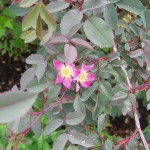
Flower carpet is amassed in bloom near the end of the boxwood walkway…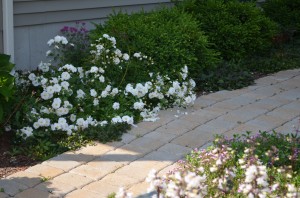
and New Dawn is just getting it’s act together after some horrible encounters with the rabbits.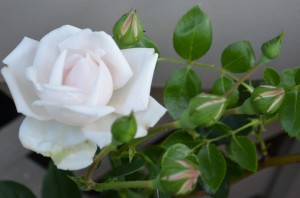
Christopher Marlowe is my favorite David Austin rose, I love the color……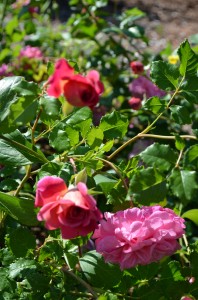
the pink rugosa is loving life where I planted way out back so it can run to it’s hearts content without having to be thinned which causes me incredible pain since it is so thorny.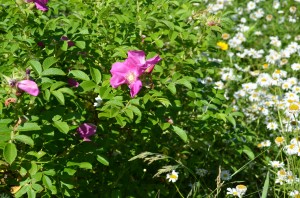
The Fairy rose is just starting to open for its summer long show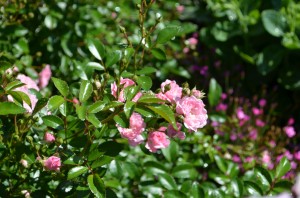
and yet to even open are Golden Celebration (another David Austin), Climbing Iceberg, Don Juan, and Carefree Beauty. I am glad they are not flowering yet, as it can get a little garish here at times, plus I like to extend the show as long as possible.
After they are finished blooming , many of them have beautiful hips (the seed capsules or “fruit” of the rose) of which RosaGlauca’s are my favorite. They are just starting to form now. Wish me luck tonight!